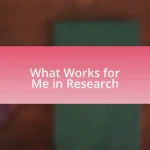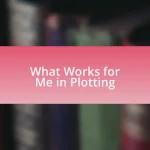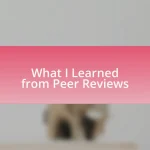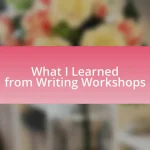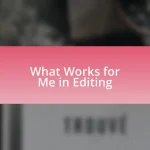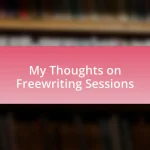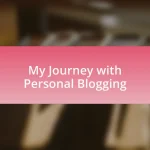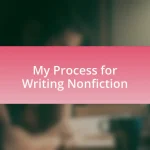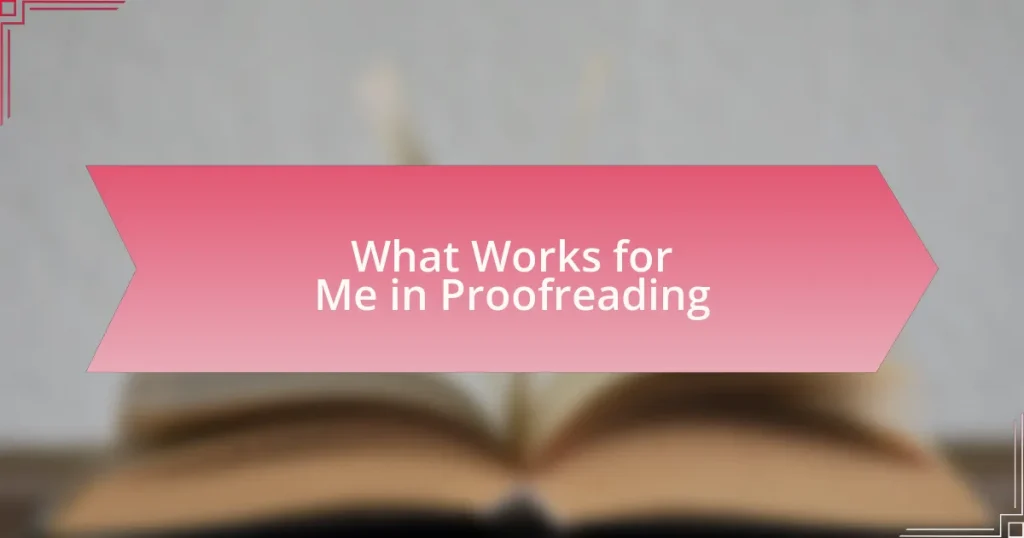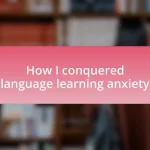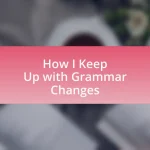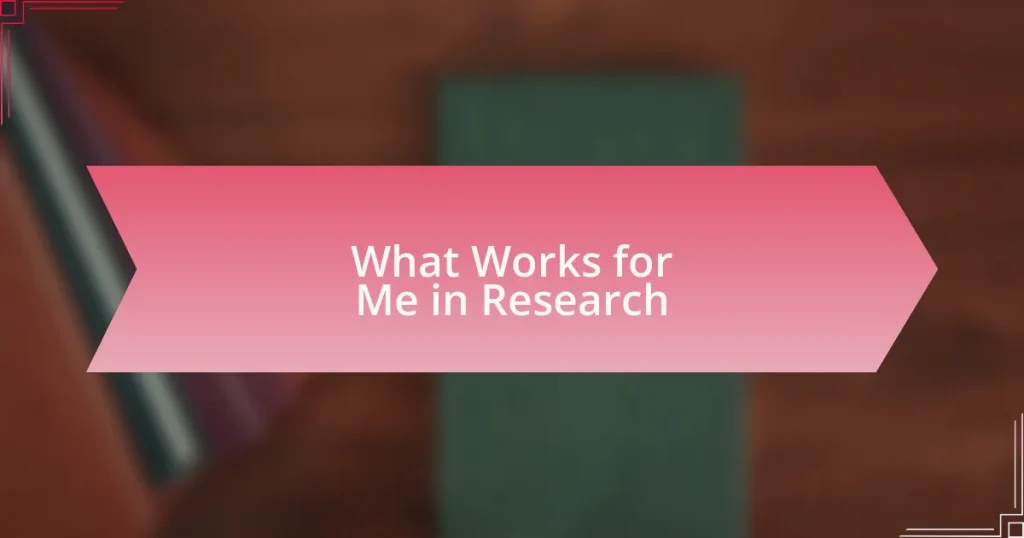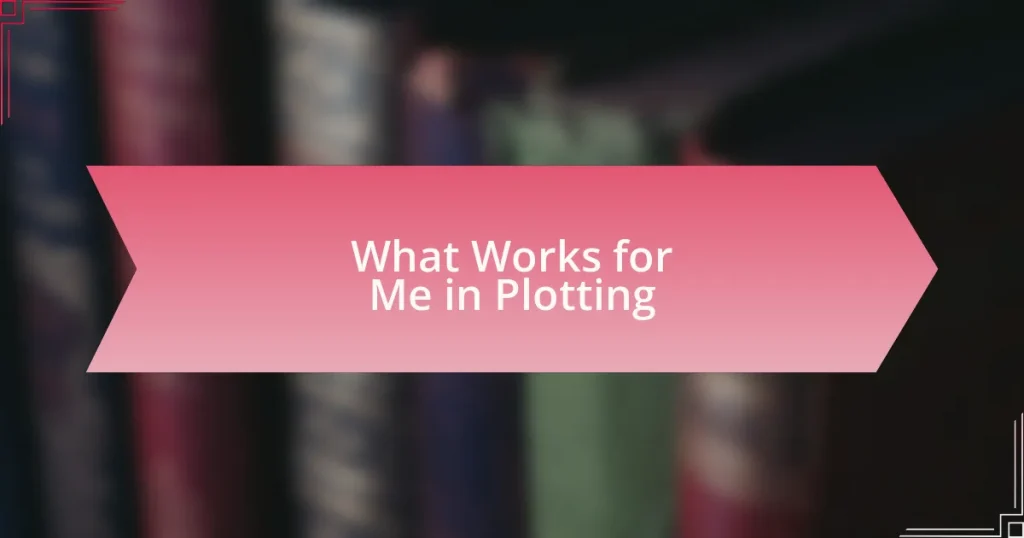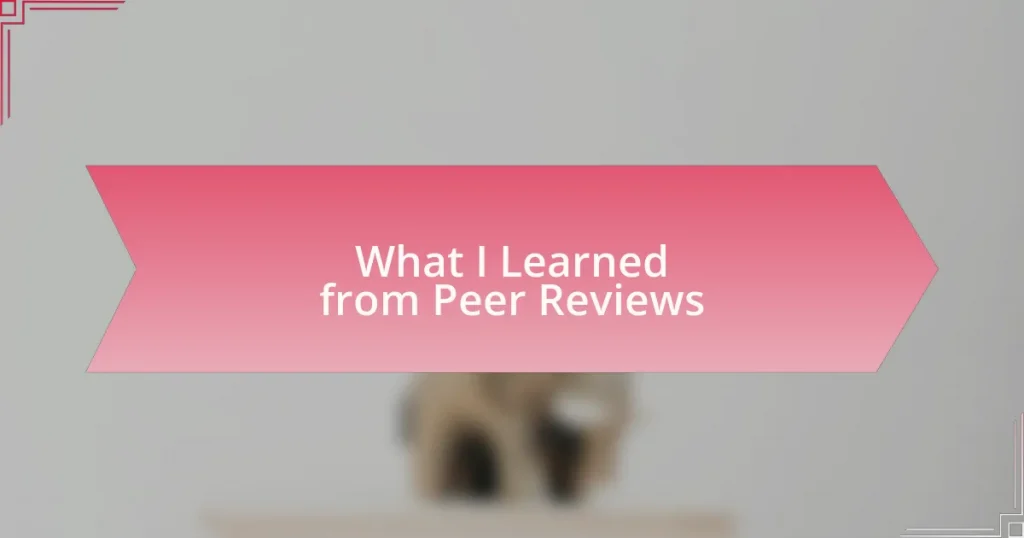Key takeaways:
- Breaking text into smaller sections and stepping away leads to fresh perspectives, enhancing error detection.
- Proofreading not only corrects mistakes but also reassesses arguments, enhancing overall writing quality.
- Using digital tools like Grammarly and Hemingway can significantly improve clarity and readability.
- A systematic proofreading routine, including reading aloud and using checklists, ensures a thorough review of work.
Author: Clara Whitfield
Bio: Clara Whitfield is a captivating storyteller and acclaimed author known for her rich, character-driven narratives that explore the complexities of human relationships. With a background in psychology and a passion for literature, Clara weaves intricate plots that resonate with readers on multiple levels. Her debut novel, “Echoes of the Heart,” received critical acclaim and was a finalist for several literary awards. When she’s not writing, Clara enjoys hiking in nature, experimenting in the kitchen, and engaging with her vibrant community of fellow writers. She resides in Portland, Oregon, where she draws inspiration from the lush surroundings and eclectic culture.
Understanding proofreading techniques
Proofreading techniques can vary widely, but I’ve found that breaking the text into smaller sections really helps me catch those pesky errors. I often ask myself, “Am I reading this with fresh eyes?” By distancing myself from the text for a few hours or even a day, I approach it as if it’s my first time encountering it, which is often when mistakes reveal themselves most clearly.
I remember a time when I was proofreading an article and decided to read it out loud. It felt a bit odd at first, but I was surprised by how much it enhanced my focus on the rhythm and flow of the writing. This technique helped me notice awkward phrasing that I would have glossed over while reading silently. Have you ever tried this? It’s like having a conversation with the text, and it uncovers errors that might escape your notice otherwise.
Using different formats can also be enlightening. I often switch between reading on my computer screen and printing out the document. Seeing it in a different medium often changes my perspective, making errors jump out at me. Have you ever experienced a similar moment when a simple change in environment gave you a newfound clarity? It’s these small tweaks that can make a pivotal difference in the proofreading process.
Importance of proofreading in writing
Proofreading is crucial because it transforms a rough draft into a polished piece, enhancing clarity and professionalism. I remember the first time I submitted an article without thorough proofreading—it was embarrassing to spot typos and grammatical errors after it was published. Since then, I’ve realized that even minor mistakes can undermine my credibility as a writer.
Moreover, the process of proofreading goes beyond mere error correction; it allows me to engage more deeply with my writing. Each time I meticulously comb through my work, I find myself reassessing my arguments and ensuring that my ideas flow logically. It’s a moment for reflection and improvement. Have you ever caught a flawed argument only after re-reading? Those moments can truly reshape the impact of the writing.
Finally, I’ve found that proofreading is an act of respect for my readers. When I deliver a clean and coherent piece, I’m valuing their time and attention. It’s a commitment to quality that builds trust. Do you ever think about the effort your readers put in? By offering well-proofed work, I’m honoring their investment in my words.
Effective proofreading strategies
Effective proofreading strategies can vary from person to person, but a few techniques have consistently worked for me. One method I swear by is reading my work aloud. This approach forces me to slow down and hear the rhythm and flow of my sentences. I remember a night spent revising an important proposal; hearing my words allowed me to catch awkward phrasing that I’d overlooked on the screen. Have you tried this? It can really open your eyes to how the text sounds.
Another strategy I find effective is stepping away from my writing for a while. When I return with fresh eyes, I’m better able to spot inconsistencies and errors. There have been countless times when I thought I had perfected a piece, only to discover glaring mistakes after a short break. Time apart can sharpen your focus—it’s like hitting the reset button in your brain. How often do you give your work that breathing room?
Finally, I’ve learned the value of using digital tools to aid my proofreading efforts. Tools like grammar checkers can catch mistakes I tend to overlook, which is invaluable, especially when I’m dealing with intricate details. However, I never rely solely on them; they’re just an extra set of eyes. Have you considered what balance works best for you? Ultimately, blending technology with my own instincts has made a noticeable difference in the quality of my revisions.
Tools that assist in proofreading
Selecting the right proofreading tools can profoundly impact my editing process. For instance, I often turn to Grammarly, not just for its grammar checks but also for its clarity suggestions. I remember a scenario where it flagged a convoluted sentence in a blog post I was writing. My original phrasing was unclear, but the tool helped clarify my message, allowing me to better connect with my readers. Have you encountered similar moments where technology guided your clarity?
Beyond grammar checkers, I’ve also found value in using readability analyzers like Hemingway App. This tool helps me break down my writing into manageable parts, ensuring my content is not only grammatically correct but also easily digestible. One time, using Hemingway made me realize that I’d been using too many adverbs, which can clutter my writing. I adjusted my style, and the response from my readers was overwhelmingly positive. Have you ever taken a moment to check how accessible your writing really is?
Finally, I can’t understate the importance of annotation tools, especially during collaborative projects. My experience with Google Docs has been particularly enlightening, as it allows real-time feedback from peers. I still vividly recall a team project where our comments and suggestions elevated the final draft. This collaboration revealed blind spots in my writing that I wouldn’t have caught on my own. What’s your approach to incorporating feedback from others?
My personal proofreading routine
When I sit down to proofread my work, I typically start with a deliberate break from writing. Stepping away for at least an hour allows my mind to reset, making it easier to catch errors. I vividly remember a time when I dived right back into editing without taking a break; my eyes glazed over, and I missed several glaring mistakes—frustrating! Have you ever found yourself in that same boat?
Next, I approach my proofreading with a systematic checklist. I go through my writing in stages, first focusing on grammar, then punctuation, followed by flow and coherence. I once discovered a significant inconsistency in a piece that disrupted the entire narrative because I had skipped this process. Running through my checklist ensures I don’t overlook any crucial elements. Isn’t it fascinating how a structured approach can save you from potential embarrassment later?
Lastly, I always read my work aloud. This practice helps me identify awkward phrasing and ensures my writing sounds as good as it looks on paper. I still recall finding a rhythm in my prose during one editing session, transforming an average piece into something I felt proud of. Have you tried this method to see how your words resonate? It’s one of those simple techniques that can make a world of difference.
Tips for improving proofreading skills
When it comes to improving my proofreading skills, I’ve found that using digital tools can be a game-changer. I often rely on software that highlights grammatical issues or offers style suggestions, which helps me catch mistakes I might otherwise overlook. It’s amusing to think about how many times I’ve typed “their” when I meant “there”—thankfully, those little helpers have saved me from many proofreading faux pas.
Another tip that has served me well is changing up the format of my work. I occasionally print out my writing or switch to a different font, which gives my eyes a fresh perspective. One time, I swapped to a bright blue font while proofing a lengthy report, and suddenly, mistakes that had blended into the text popped out like they were in neon lights. Have you considered how a simple change in appearance can make a big impact on your proofreading?
Lastly, I’ve begun to engage a second pair of eyes—usually a trusted friend or colleague. I remember sending a piece to a friend who caught an oversight regarding a factual detail I had missed, which could have altered the message significantly. Collaboration not only broadens the scope but also introduces new perspectives, turning proofreading into a more enriching experience. Have you ever thought about who could provide valuable feedback on your work?
